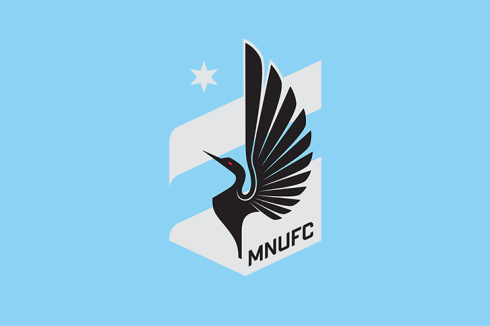Hockey and art, heritage and politics have come together in the form of one goalie’s mask now on display at the Minnesota History Center.
The mask, featuring a design by Mdewakanton Dakota artist Cole Redhorse Taylor and worn by Minnesota Wild goaltender Marc-André Fleury on Native American Heritage Night in 2023, is under glass as part of a new display in the ongoing "Our Home: Native Minnesota" exhibit.
ADVERTISEMENT
On Tuesday, Redhorse Taylor stood next to the display, wearing a special Wild hockey jersey issued to celebrate Native American History Month, and reflecting on this helmet-shaped collaboration.
“People have said to me, ‘This is a moment in Minnesota history,'” Redhorse Taylor says. “From what I understand, that’s why the Historical Society wanted it — because it was such a moment in history.”
Here’s the story behind that moment.
An artist’s start
Going on a field trip to the Minnesota History Center is a rite of passage for kids in Minnesota. Redhorse Taylor, 30, was one of those kids. As Mdewakanton Dakota and a member of the Prairie Island Indian Community, though, he didn't always see himself reflected in what he saw at the museum as a child.
“There was nothing like this,” he says of the “Native Minnesota” exhibit. But …
“There was one small exhibit which I thought was actually really cool,” he says. “It was an exhibit where there was an oral history of a Dakota girl and her family, a video of her talking about her family history in relation to how the state formed.”
While he was always drawn to history, art was another matter.
ADVERTISEMENT
“I was taught artistic skills when I was younger, I was taught how to bead, but I didn’t really think of myself as an artist,” he says. “What we know as Native art, Indigenous art, Dakota art, I didn’t know that was considered art — I thought it was a craft.”

When he began taking art classes in his senior year of high school, though, his future was revealed to him.
“I thought, ‘Oh, this is what I want to do,'” he recalls.
After initially planning to major in American Indian Studies and minoring in art at the University of Minnesota-Duluth, Redhorse Taylor transferred to the Minneapolis College of Art and Design, where he majored in fine arts studio with an emphasis on drawing and painting.
His art studies took him full circle when he was invited to be part of the Native American Artist-in-Residence Program
through the Historical Society .
“I decided to research Dakota pucker toe moccasins, which in our language we call ‘Hanyuski,'” he says.
In a way, it was a lost art.
ADVERTISEMENT
“I wanted to work to revitalize them in our communities,” he says. “I learned how to make them, how to construct them and do the pattern for them, because they’re all done by hand.”
As part of his residency, the artist taught others how to make them, too.
“One of the things I’ll never forget about doing that residency, and why I felt like the people benefited from it, was when an elder said, ‘I haven’t seen this type of moccasin since I was a little girl,'” he says.
A new opportunity
So how did the helmet opportunity arise?
“My tribe sponsors the Minnesota Wild through our own enterprises. We have a really good relationship with them,” Redhorse Taylor says. “And one of the things they’ve been doing in recent years, which I never saw as a kid, was they have Native American Heritage Night … and so, because of that, they approached my tribe and they wanted to reach out to an artist, they did a call for art, they wanted to have the artist design a helmet for the hockey mask for the goalie, Marc-André Fleury.
“This event and this cause was really important to him because his wife ( Véronique Larosee Fleury ) is Indigenous, their children are Indigenous, from Canada,” he says. “So this was really important for him and for me, to see it done. So I put my name in the hat for consideration, and I was chosen.”
The artist, who credits the marketing department of Treasure Island Resort & Casino for serving as the go-between for this creative venture, met with the Wild ahead of the collaboration.
ADVERTISEMENT
“They gave me some of the parameters I had to work around, like what color palette to use, but otherwise gave me free range,” Redhorse Taylor says. “I knew I wanted to use Dakota floral designs, which is inspired by our material culture, by our beadwork and quillwork, which is inspired by the floral and fauna of our homelands.”
The words used were important, too.
“On the brow of the helmet, I wanted to have the Dakota language featured on that element,” he says. “And so on the element you see, ‘Mni Sóta Makoce,’ which means, ‘The land of the cloudy waters’ or ‘The land of the misty waters’ — there are many translations of that, but that’s where Minnesota gets its name from, the Dakota language. So I wanted to make sure that was highlighted.”
Under glass, the helmet looks like it was handpainted, but that is not how this creative process worked.
______________________________________________________
This story was written by one of our partner news agencies. Forum Communications Company uses content from agencies such as Reuters, Kaiser Health News, Tribune News Service and others to provide a wider range of news to our readers. Learn more about the news services FCC uses here.


















